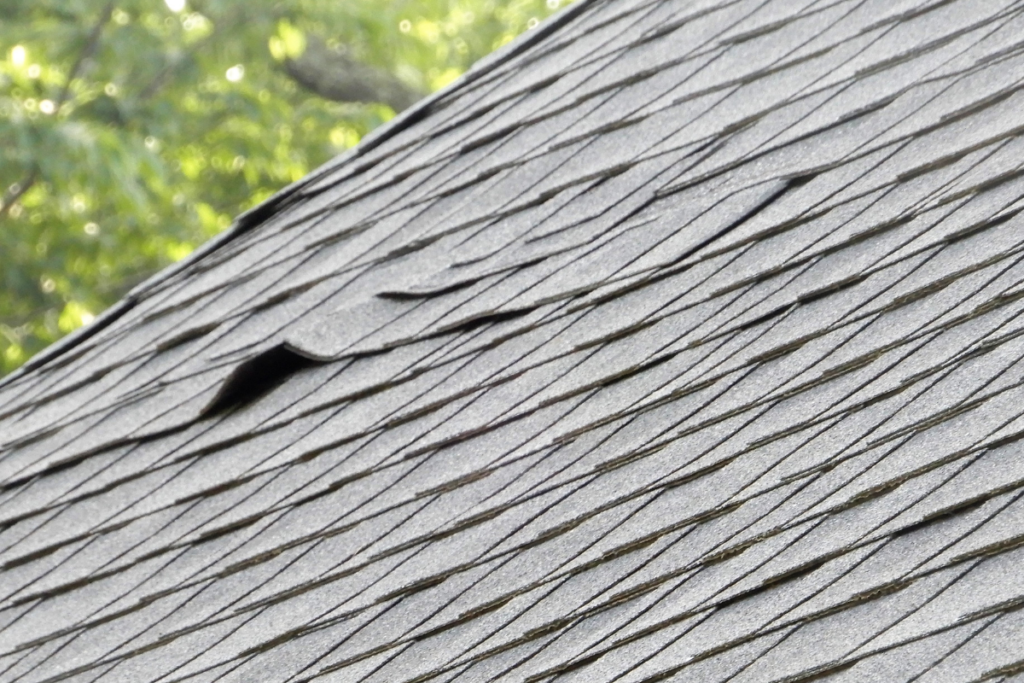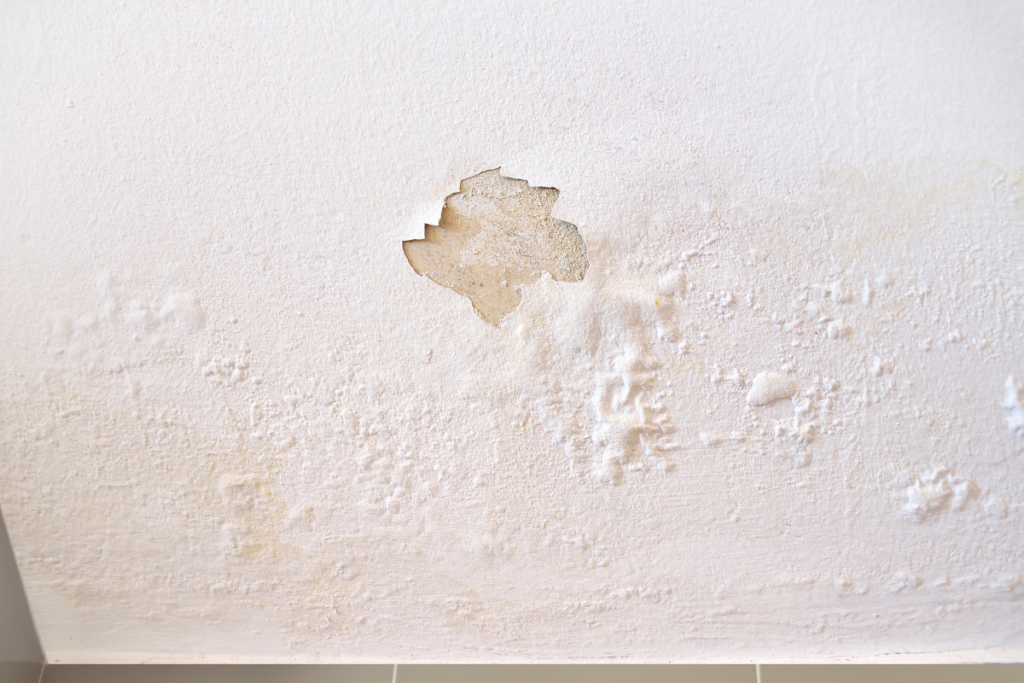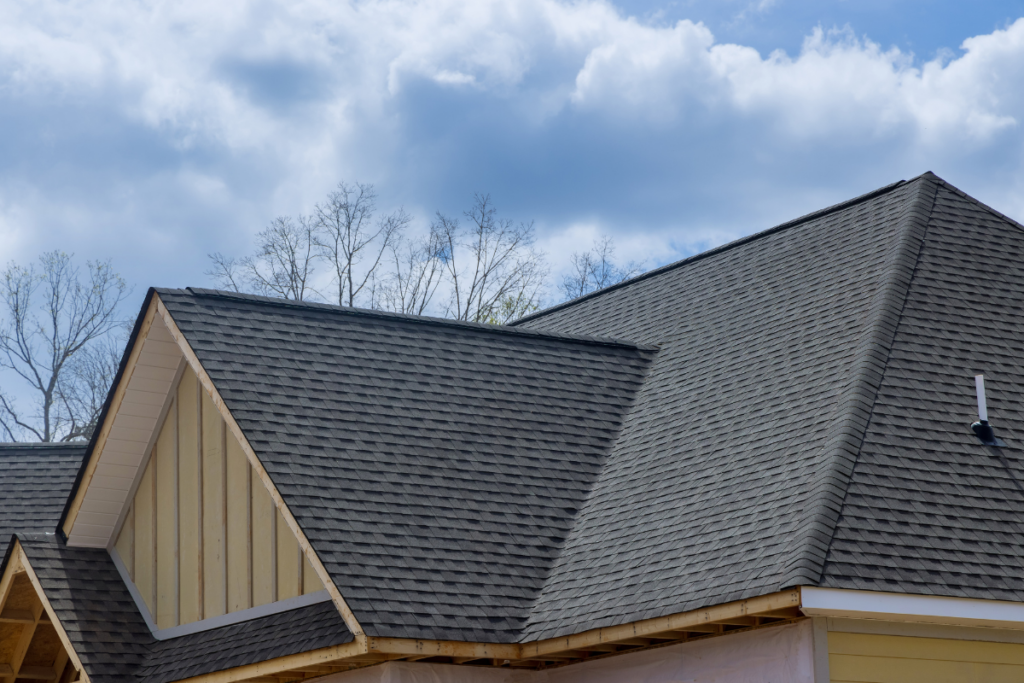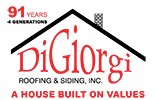A roof is one of the most important components of a house or building. It protects us from the elements and keeps our property safe and dry. However, roofs are not invincible and can suffer damage over time. Two common problems that homeowners face are roof leaks and damaged roofs. While these issues may seem similar, they have critical differences. Here is the difference between a roof leak and a damaged roof.
The Cause
The significant distinction between a roof leak and a damaged roof is the source of the issue. A particular problem, such as missing or broken shingles, faulty flashing, blocked gutters, ice dams, or condensation, often causes a roof leak. These issues can cause water to seep into the roof and the building, resulting in water spots and mold growth.

A damaged roof is the consequence of a more severe impact on the roof structure. Various sources, including weather conditions, age, improper installation, and lack of maintenance, can cause this type of harm. For instance, strong winds, heavy downpours, or snowstorms can cause destruction to the roof, thus leading to a damaged roof. Age and a lack of upkeep can also lead to a damaged roof, as roofs naturally deteriorate over time and may require replacement or repairs to remain strong.
The Severity
A roof leak can be a minor issue that only affects a small area, while a damaged roof is typically more severe and can affect the entire roof.
Roof leaks can have a range of causes, including damaged or missing shingles, faulty flashing, or blocked gutters. Although a roof leak may lead to damage to the interior of the building, it may only affect a limited area of the roof. For instance, a roof leak may be limited to a single room or part of the structure, often allowing for a quick and easy repair.

In contrast, a damaged roof is usually a more severe problem that can compromise the entire roof system. This can be due to various causes, such as adverse weather, aging, improper installation, or neglect. Signs of a damaged roof may include sagging, cracks, holes, missing or loose shingles, and an accumulation of granules in the gutters.
The Cost
Identifying and repairing a roof leak can be a straightforward and cost-effective process. The repair cost will depend on the cause of the leak but often involves repairing or replacing damaged shingles or flashing, clearing out clogged gutters, or resolving a condensation issue. The cost of the repair is generally much lower than the cost of replacing the entire roof.
On the other hand, the seriousness of a damaged roof cannot be overstated, as the cost of repairs or replacement can be significant. Depending on the severity of the damage, repair may involve extensive work, such as replacing parts of the roof or addressing structural damage. In some circumstances, a complete roof replacement may be necessary. The cost of fixing or replacing a damaged roof depends on the type and severity of the damage, the type of materials used, and the complexity of the repairs or installation.
Prevention
Preventative measures can aid in avoiding a roof leak or damaged roof, yet the type of prevention may vary depending on the root cause of the issue. Hence, prevention is a distinguishing factor between the two.
It is essential to perform regular maintenance on the roof to avoid roof leaks. This can include trimming any trees close to the roof, replacing any damaged or missing shingles, and applying a sealant to any areas where water could enter the building. Additionally, having regular inspections of the roof can help identify any potential issues before they become major problems.

It is essential to perform regular maintenance on the roof to avoid roof leaks. This can include trimming any trees close to the roof, replacing any damaged or missing shingles, and applying a sealant to any areas where water could enter the building. Additionally, having regular inspections of the roof can help identify any potential issues before they become major problems.
To avoid damage to your roof, it is recommended that you invest in quality roofing materials and hire a professional to install them. Additionally, regular roof inspections can help identify potential problems, such as loose shingles or signs of deterioration. This will ensure the roof remains in good condition in the long term.
Water damage can be caused by both roof leaks and structural damage to the roof. A roof leak is a breach in the waterproofing layer, whereas a damaged roof is an issue with the roof’s structure. A roof leak indicates an underlying issue, whereas a damaged roof is the issue itself.





